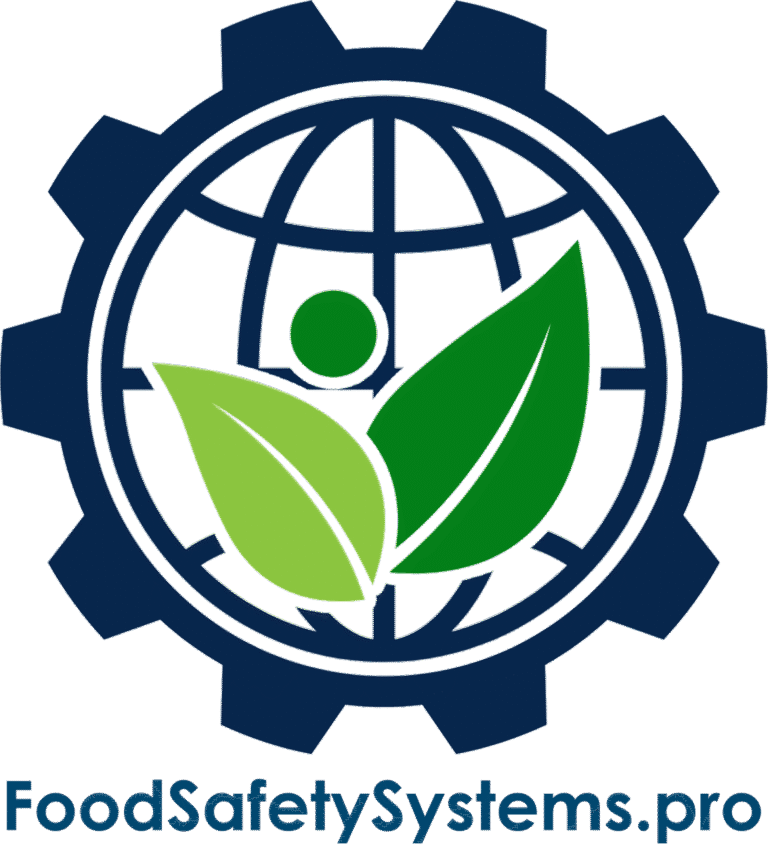Corrective and Preventive Action (CAPA) Process
Based on SQF Code Edition 9 – System Element 2.11.1
Requirement Overview
SQF Edition 9, System Element 2.11.1 requires:
“A documented corrective and preventive action procedure shall be prepared and implemented to address non-conformities impacting food safety, legality, or regulatory compliance, and to prevent their recurrence.”
A CAPA program is essential to identify root causes of non-conformities and ensure lasting improvements in your food safety management system.
Disclaimer: Food Safety Systems is an independent training and advisory resource. This content is not affiliated with, endorsed by, or certified by the Safe Quality Food Institute (SQFI). Please visit www.sqfi.com for official certification details.

Key Compliance Objectives
-
✓ Establish a documented CAPA procedure
✓ Conduct structured root cause analysis
✓ Implement and verify corrective actions
✓ Maintain complete records for accountability and audits
Step-by-Step Compliance Implementation
1. Develop a Documented CAPA Procedure
-
Your Procedure Should Cover:
-
• Identification and documentation of non-conformities
• Root cause analysis (RCA) methodology
• Implementation of corrective and preventive actions
• Assignment of responsibilities and deadlines
• Verification of action effectiveness and closure
Evidence to Maintain:
-
• Approved CAPA SOP (Standard Operating Procedure)
• Records of staff training on CAPA roles
- • Identification and documentation of non-conformities • Root cause analysis (RCA) methodology • Implementation of corrective and preventive actions • Assignment of responsibilities and deadlines • Verification of action effectiveness and closure
- • Approved CAPA SOP (Standard Operating Procedure) • Records of staff training on CAPA roles
2. Identify and Record Non-Conformities
-
Common Sources:
-
• Internal or external audit findings
• Customer complaints
• Product deviations
• Equipment or process failures
Evidence to Maintain:
-
• Non-conformance reports
• Classification records (minor, major, critical)
• Incident documentation
- • Internal or external audit findings • Customer complaints • Product deviations • Equipment or process failures
- • Non-conformance reports • Classification records (minor, major, critical) • Incident documentation
3. Perform Root Cause Analysis
-
RCA Techniques:
-
• 5 Whys
• Fishbone (Ishikawa) diagrams
• Cause-and-effect mapping
Evidence to Maintain:
-
• Completed RCA forms
• Justification of identified root cause(s)
• Investigator notes or facilitator sign-off
- • 5 Whys • Fishbone (Ishikawa) diagrams • Cause-and-effect mapping
- • Completed RCA forms • Justification of identified root cause(s) • Investigator notes or facilitator sign-off
4. Implement Corrective and Preventive Actions
-
Plan Requirements:
-
• Defined tasks and responsible personnel
• Implementation timeline
• Preventive actions to reduce recurrence
Evidence to Maintain:
-
• Corrective Action Request (CAR) forms
• Preventive action plans
• Task completion logs with responsible party signatures
- • Defined tasks and responsible personnel • Implementation timeline • Preventive actions to reduce recurrence
- • Corrective Action Request (CAR) forms • Preventive action plans • Task completion logs with responsible party signatures
5. Verify CAPA Effectiveness
-
Verification Steps Include:
-
• Re-auditing affected process or area
• Confirming root cause has been eliminated
• Reviewing data for recurrence
Evidence to Maintain:
-
• Closed CAPA forms with verification sign-off
• Effectiveness review documentation
• Updated SOPs or training records as needed
- • Re-auditing affected process or area • Confirming root cause has been eliminated • Reviewing data for recurrence
- • Closed CAPA forms with verification sign-off • Effectiveness review documentation • Updated SOPs or training records as needed
Common Audit Findings & Solutions
Audit Finding
Recommended Action
No written CAPA procedure
Develop and approve a formal CAPA SOP
Root cause not identified or documented
Train on structured RCA techniques
Incomplete corrective action tracking
Use a CAPA tracking log and accountability form
No verification of effectiveness
Schedule follow-ups and maintain closure logs
| Audit Finding | Recommended Action |
|---|---|
| No written CAPA procedure | Develop and approve a formal CAPA SOP |
| Root cause not identified or documented | Train on structured RCA techniques |
| Incomplete corrective action tracking | Use a CAPA tracking log and accountability form |
| No verification of effectiveness | Schedule follow-ups and maintain closure logs |
Auditor Verification Checklist
Auditors will typically:
-
• Review your CAPA SOP
• Examine open and closed CAPA records
• Validate the use of RCA methods
• Confirm documented evidence of CAPA implementation and results
CAPA Program Roadmap
Build Your Program
-
✓ Approve your CAPA SOP
✓ Assign team roles and responsibilities
Train and Validate
-
✓ Train teams on reporting and RCA practices
✓ Conduct CAPA simulations or case studies
Operate and Monitor
-
✓ Record non-conformities and track actions
✓ Monitor deadlines and resolution
Improve Continuously
-
✓ Analyze CAPA trends
✓ Revise SOPs and training to prevent repeat issues
Why This Matters?
A strong CAPA process:
-
✓ Reduces repeat food safety issues
✓ Demonstrates regulatory readiness
✓ Supports a culture of continuous improvement
✓ Increases operational efficiency and accountability
Need Support Materials?
Food Safety Systems provides:
-
✓ CAPA SOP templates and workflows
✓ Root cause analysis tools and examples
✓ Action planning forms and closure logs
✓ Auditor-ready CAPA recordkeeping sheets
Privacy Policy | Terms of Service | Disclaimer
Powered by Consultare Inc. Group, A Compliance Company







